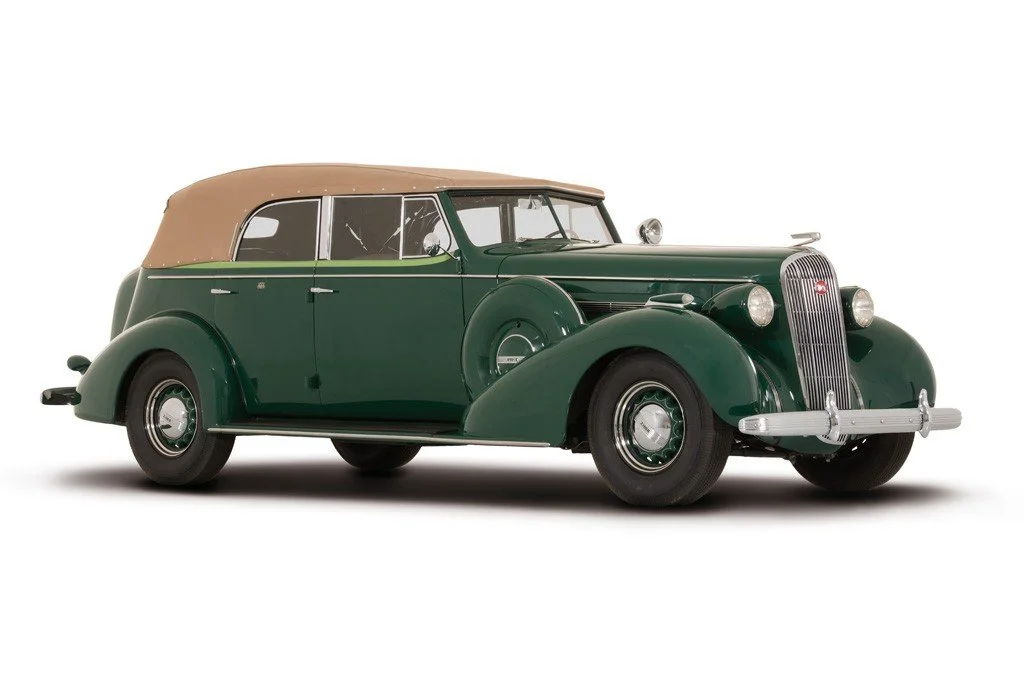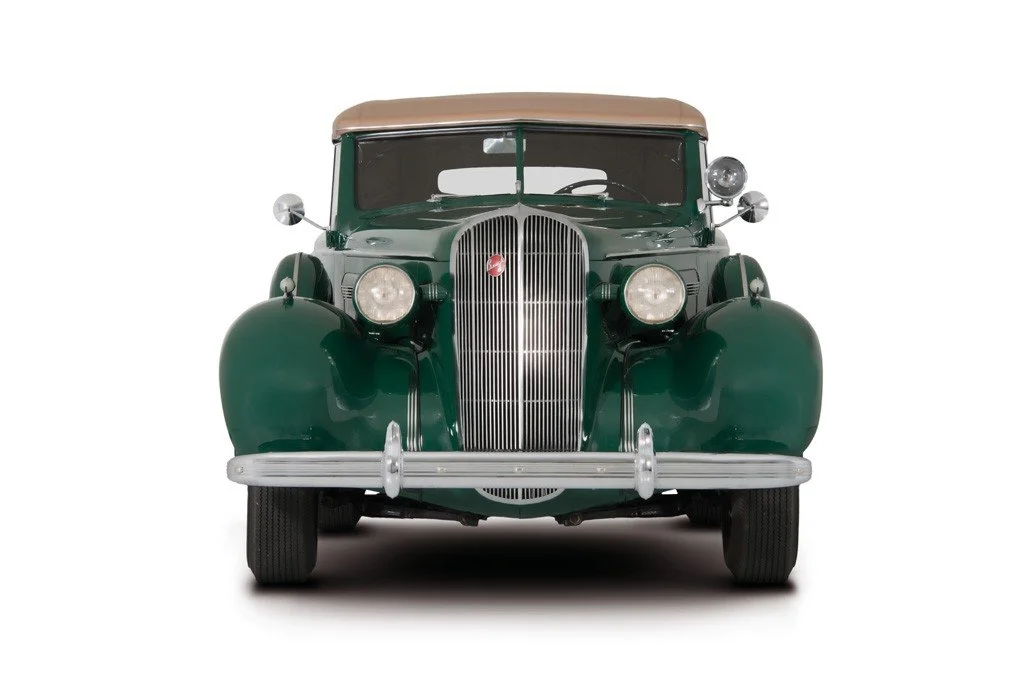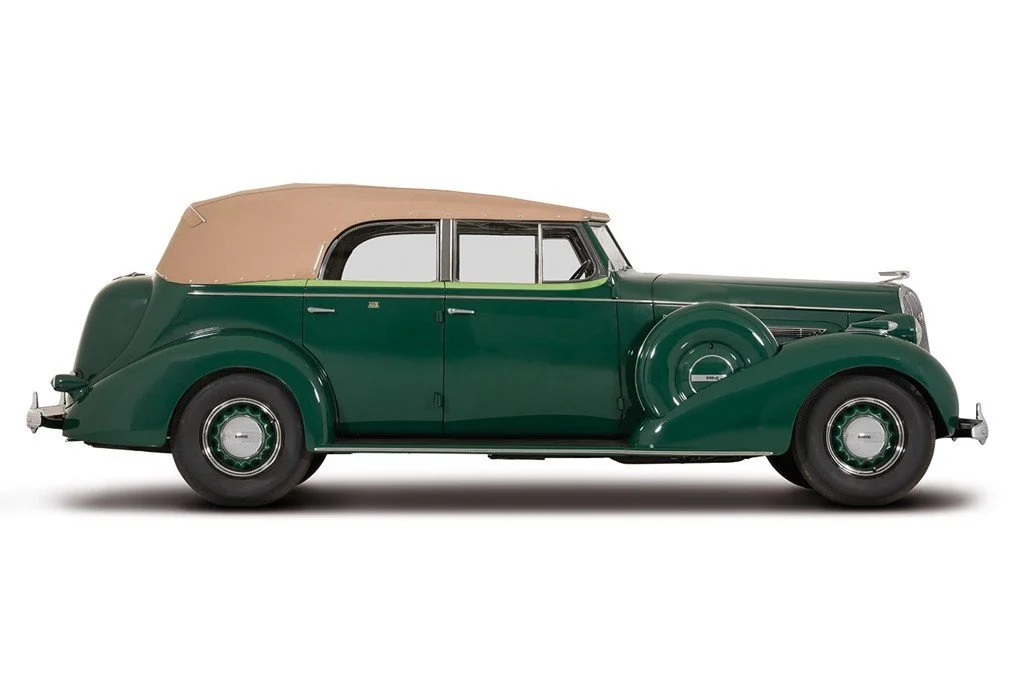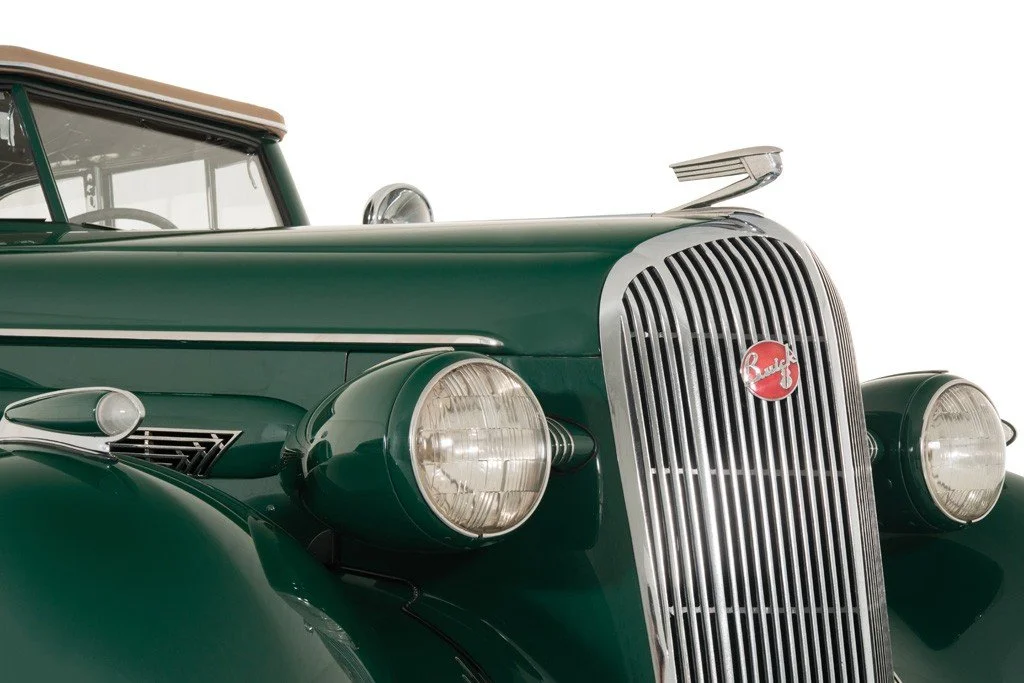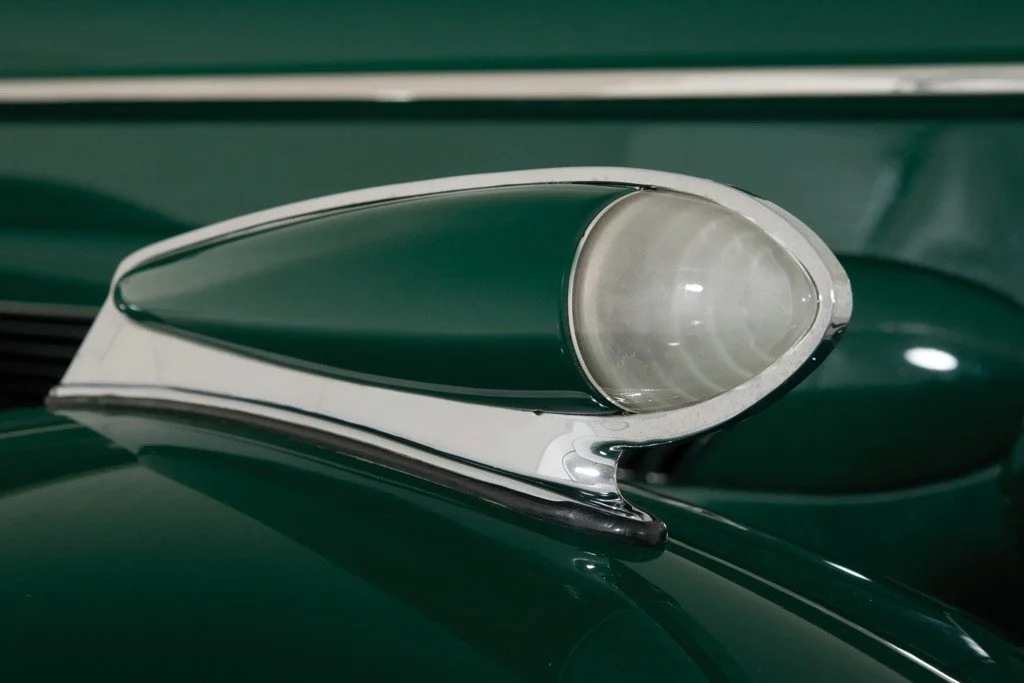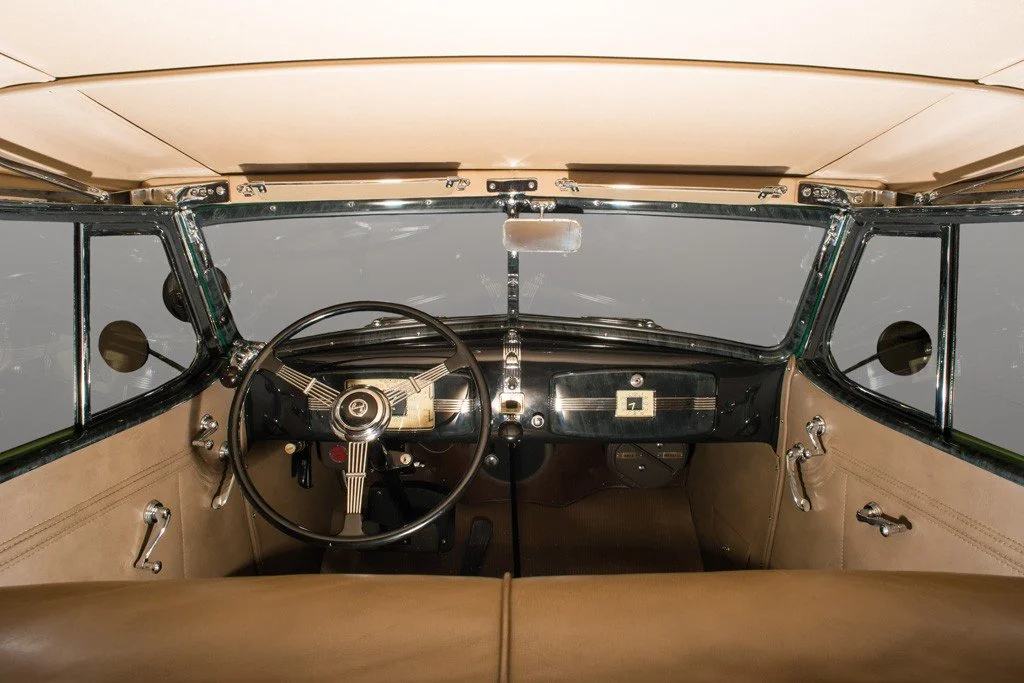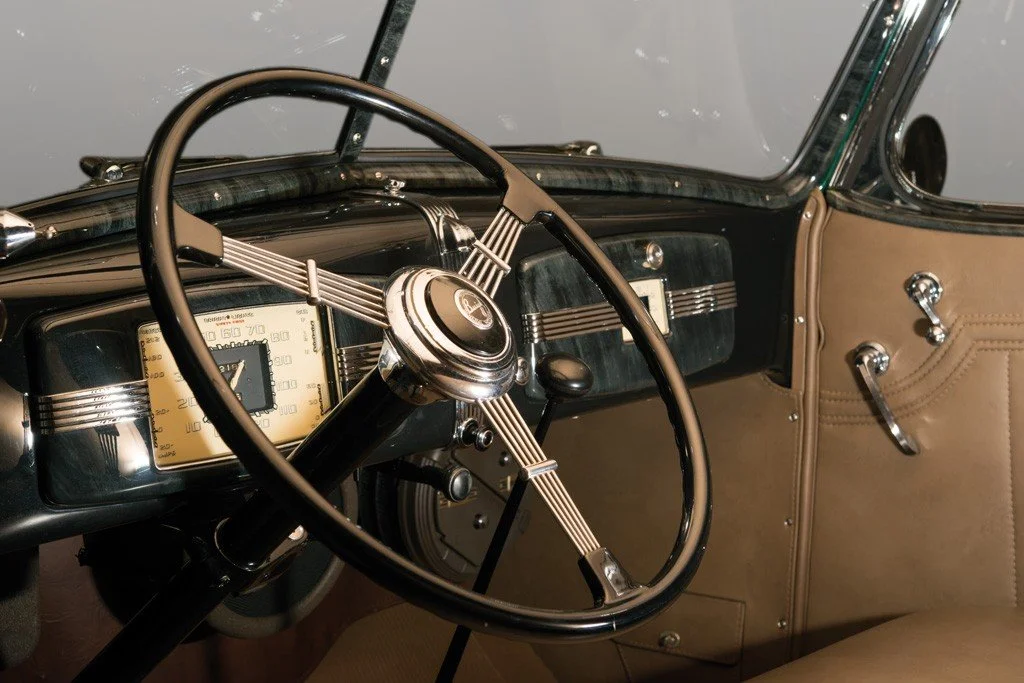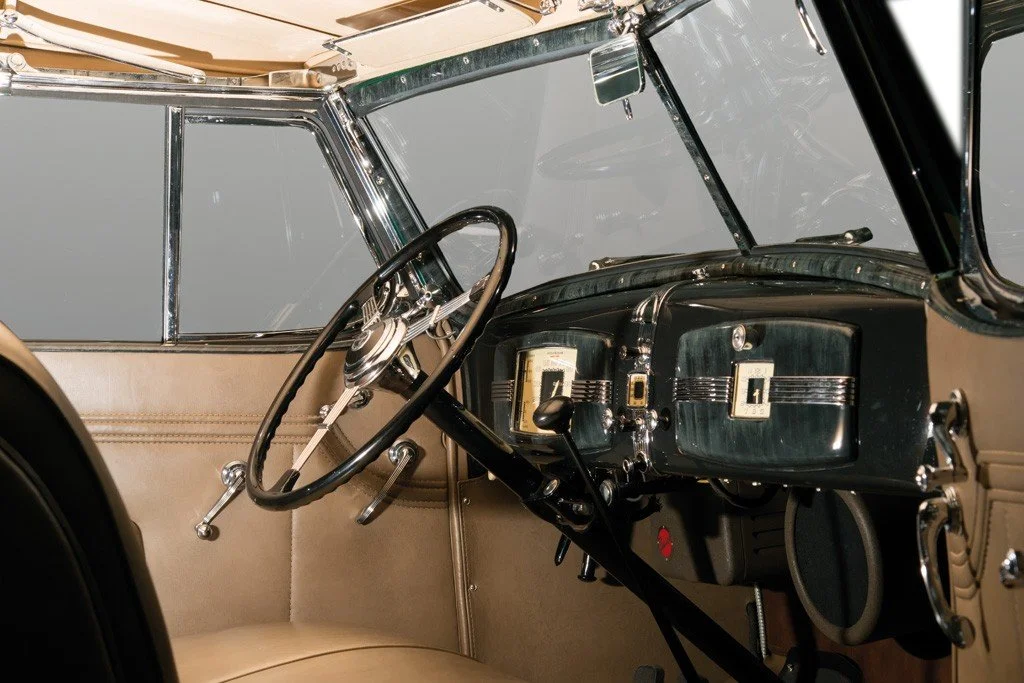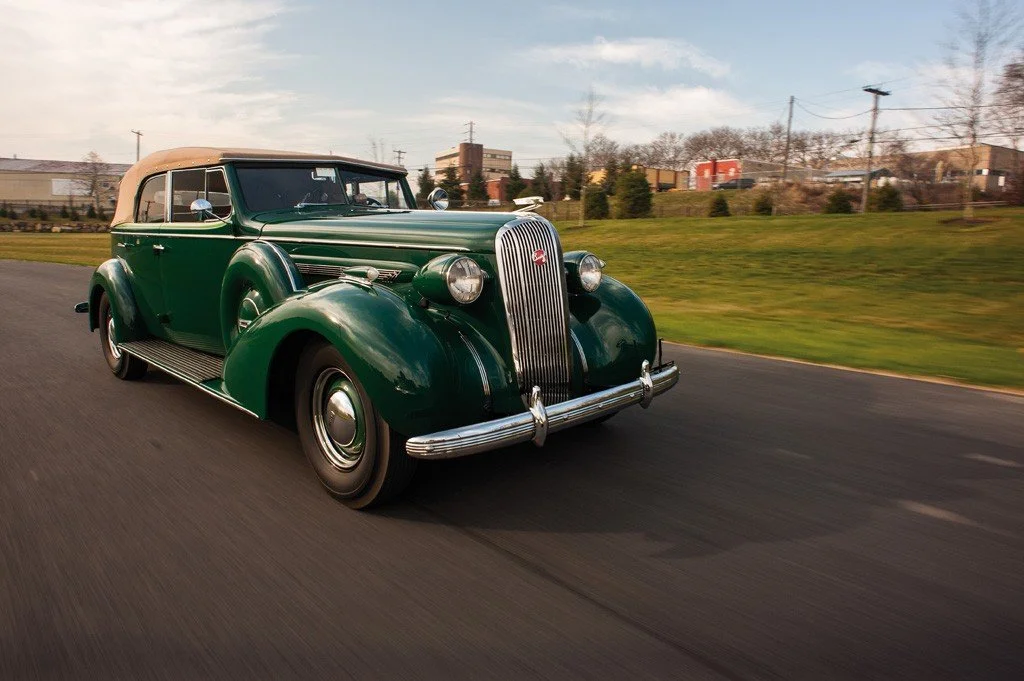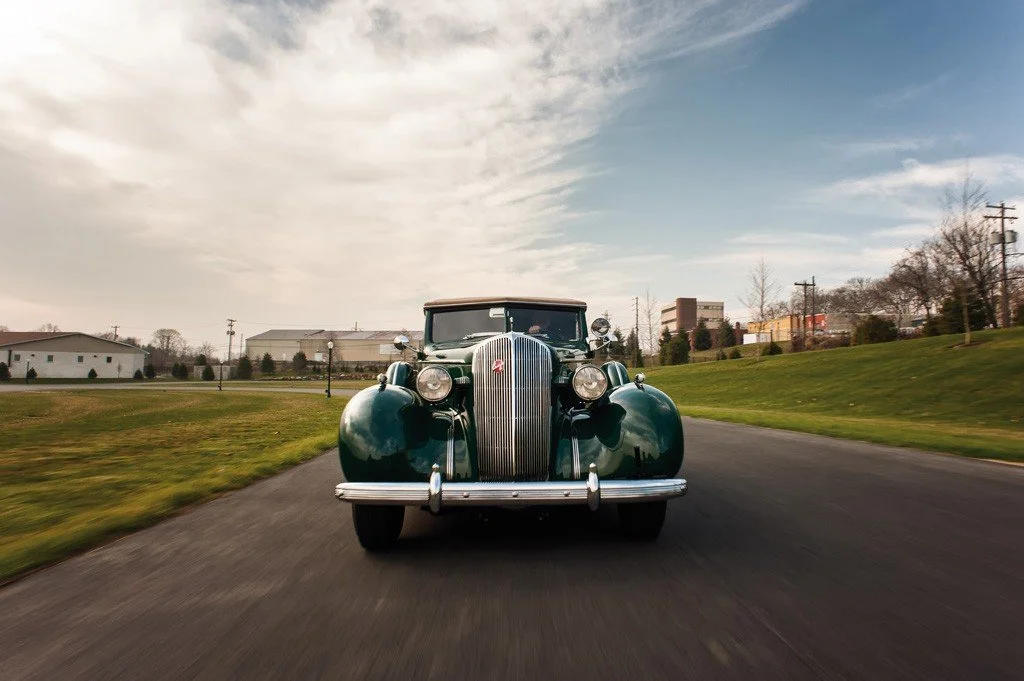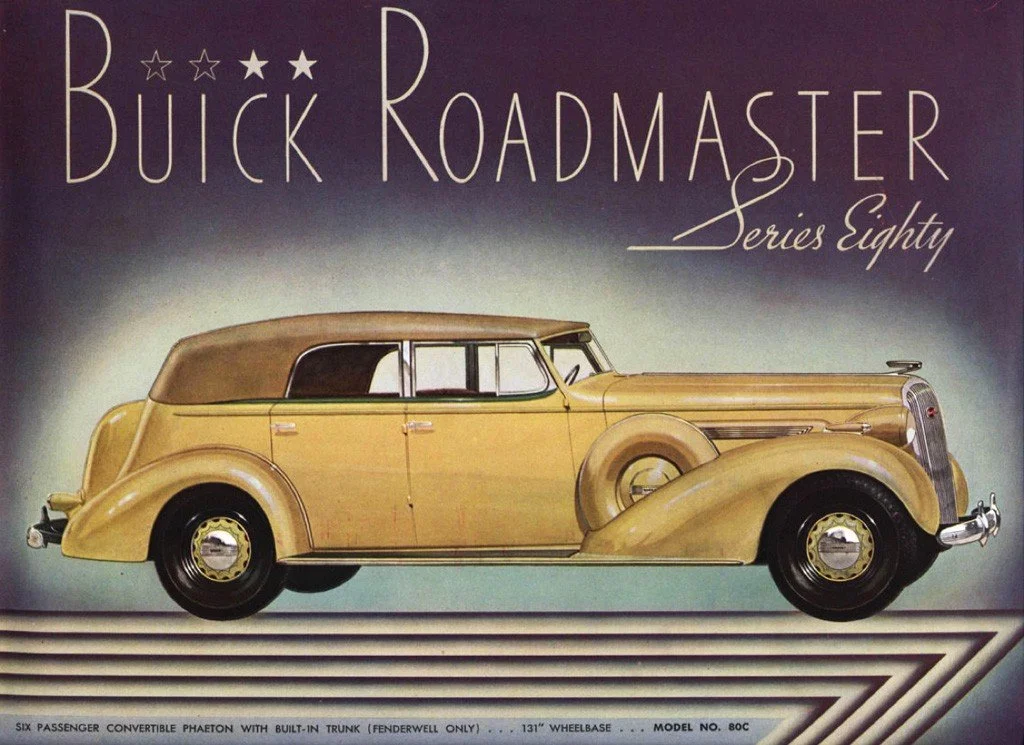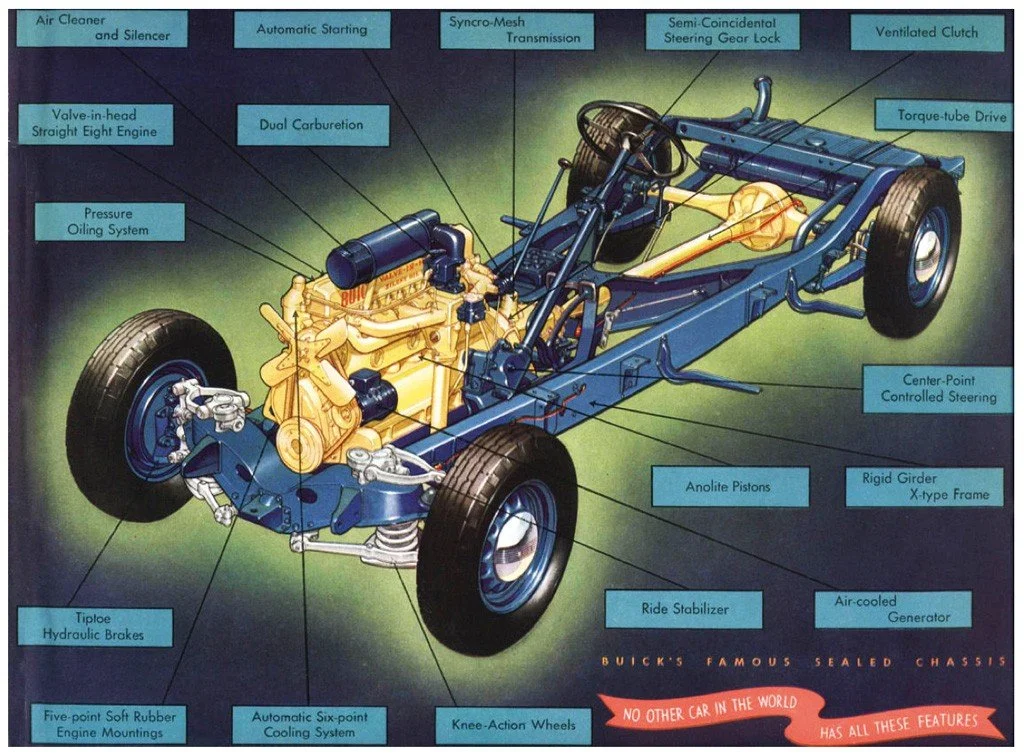-
The Roadmaster Series was introduced in 1936 and was based on a 131 inch wheelbase, equipped with the new 320 engine. There were just two models in this luxury series, a four door sedan and a four door convertible, a style that had become fairly uncommon. One of only 1229 Buick Roadmasterfour door convertible sedan built, this car has been given a full restoration. A high-level model, its color scheme in Dark Green with Beige leather interior makes it even more elegant.
In 1992 the car was taken apart in a restoration shop in Springfield, Illinois. Correspondence between the shop owner and the Buick’s owner shows the car as being worked on, but many parts were missing or incorrect. Century parts were a necessity. When the owner was unable to continue the expensive restoration, the car passed through several owners, before being finished in 1995 by a shop in Minneapolis, Minnesota. The car later went to a new owner in Philadelphia, Pennsylvania, and in 2006 it was purchased by the Nicola Bulgari Car Collection. -
Company
General MotorsWheelbase
131inInterior trim
Beige leatherBrakes
front and rear drumsMake
BuickLength
207inEngine
inline 8 -320.2cidTires
7.00x16Model
Roadmaster Series - Model 80CWidth
75inCarburetor
1 Stromberg EE-22Original Price
$1,565Body style
Convertible SedanWeight
4228lbsHorsepower
120hp @ 3200rpmProduction
1,064Model year
1936Exterior paint
Dark GreenTransmission
Synchro-shift 3-speed manual -
1936 was the year of the full recovery for Buick. The past years of the marque’s history were very difficult, due to poor management and an old man’s image. During the twenties sales for Buick had been very strong, with a third place in the sales rankings in 1923 with over 200,000 cars built. Production had always been very strong during this decade, but the economic recession following the Wall Street crash of October 1929 had been dramatic for Buick. Sales fell to 40,000 vehicles a year in the early thirties, with a eighth place in the car industry. Not only was the economy very weak, but the image of Buick cars was tarnished. Good solid cars, but dull-looking and intended for old-aged customers. Something had to be done, and quickly, in order to save the company. At the end of 1933, William Knudsen, head of General Motors, took matters into his own hands, and convinced Harlow H. Curtice to leave his position as AC spark plugs general manager and try to save the ailing Buick Company. Old president I.J. Reuter was really happy to finally retire and leave a very uncomfortable seat in the hands of a young and determined manager. Curtice reorganized the sales network as the first step, and then started to give a new appearance to the car lines. The new manager was very energetic and determined, and all the management felt this new atmosphere. 1934 and 1935 Buick still had the same family feeling, but things were steadily improving. Names were changed, and Special, Super, Century and Limited were introduced in place of the old numeric series designation of 40, 50, 60 and 80. At the end of 1935 the new models were introduced, and they were a huge success. Designed by the styling staff headed by Harley Earl, the new cars were unmistakably Buick, but very modern and young-looking. Fisher all-steel turret top, streamlined fenders and windshields, integrated trunk that often contained the spare tire, sweptback grille, knee-action front suspension were the main reasons for the huge success.
Buick sales were finally good, with over 168,000 cars produced for the model year, with a jump to sixth place among US carmakers. Another strong selling point was the new straight-eight engine, which had a 320 cubic inch displacement and an output of 120 horsepower. Mounted on the light Century body, this engine could propel the car to a steady 100 miles per hour, an industry first for a low-priced car. All models were now equipped with hydraulic brakes on all four wheels, and had a new steering wheel that would become an icon in the car industry. The wheel was made of very thin spring steel spokes running from the hub to a rim of black molded rubber. It was nicknamed the Banjo steering wheel, due to its similarity with the chords of the music instrument. The hub contained only the horn button, since the headlight control and the choke were moved to the dash. The parking brake was moved from the floor to a place under the dash on the left of the steering column, a place where it would stay in all the US car production for half a century.

